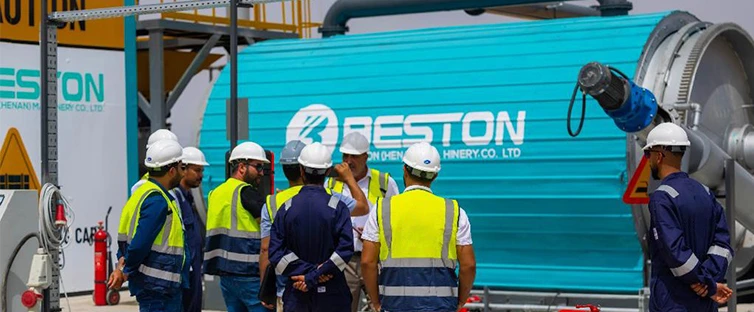Oil sludge is an inherently complex waste stream, composed of hydrocarbons, heavy metals, and residual water. When subjected to thermal conversion, its volatile compounds pose ignition and explosion hazards if not carefully controlled. The dense mixture of organic matter and contaminants also releases noxious gases under high temperatures. These intrinsic risks necessitate rigorous engineering design and operational discipline when processed in a thermal desorption unit.
Reactor Integrity and Thermal Control
One of the most critical safety aspects is reactor design. High-pressure build-up due to incomplete venting or blockages can trigger catastrophic failure. Ensuring reactors are fitted with pressure relief valves, double-sealed joints, and thermal insulation reduces such risks. Temperature uniformity is equally important. Overheated zones not only impair product quality but also increase the likelihood of localized combustion. Advanced control systems with real-time monitoring safeguard thermal balance and reactor integrity.

Volatile Gas Management
Gas emissions from oil sludge often contain hydrogen sulfide, methane, and other flammable components. Without controlled handling, these gases pose severe health and explosion hazards. Incorporating gas scrubbing units and enclosed flare systems ensures harmful compounds are neutralized before release. In modern oil sludge pyrolysis plant designs, syngas recovery systems capture volatile fractions for energy reuse, simultaneously lowering operational hazards and improving energy efficiency.
Fire and Explosion Prevention Measures
Hydrocarbon-rich residues are prone to spontaneous ignition if exposed to oxygen during unloading or storage. To mitigate this, inert gas blanketing is employed in key areas to displace oxygen and stabilize reactive atmospheres. Explosion-proof electrical fittings and grounding of conductive components are essential to avoid ignition from static discharge. Emergency quenching systems should be integrated to rapidly cool down overheated material streams and avert chain-reaction hazards.
Handling of Toxic Residues
The solid byproducts of oil sludge pyrolysis often retain traces of heavy metals and polycyclic aromatic hydrocarbons. Mishandling these residues creates long-term environmental and occupational health risks. Secure containment systems, impermeable storage areas, and stabilization treatments reduce the leaching potential of hazardous elements. Personnel must be equipped with protective gear and trained to comply with hazardous waste protocols. Proper residue management is integral to both safety and regulatory compliance.
Operator Training and Human Factors
Even the most advanced system remains vulnerable without skilled personnel. Human error, such as improper feed loading or neglect of monitoring systems, is a frequent cause of accidents. Comprehensive operator training covering feedstock variability, equipment response times, and emergency protocols significantly lowers risk levels. Routine drills and safety audits reinforce preparedness and ensure swift, coordinated responses to abnormal events.
Technological Safeguards and Redundancy
Modern safety systems rely heavily on redundancy. Backup cooling systems, dual power supplies, and automated shutdown protocols reduce the likelihood of cascading failures. Integrated sensors for gas concentration, vibration, and pressure provide early warning of deviations. When incorporated into a pyrolysis plant, these technologies create layered defenses, ensuring that a single point of failure does not escalate into a major incident.
Regulatory and Insurance Considerations
Compliance with safety standards, such as ATEX or NFPA, is not optional but foundational to project viability. Regular third-party inspections and certification audits maintain accountability. Insurance providers increasingly demand documented risk-mitigation strategies before underwriting oil sludge projects. Companies that implement robust safety infrastructures benefit from reduced premiums and improved stakeholder confidence.
Pathway to Secure Operations
Mitigating safety risks in oil sludge pyrolysis is a multifaceted undertaking. It requires a blend of robust engineering, proactive operational measures, and strict adherence to environmental and occupational standards. By integrating advanced control systems, comprehensive training, and resilient infrastructure, operators can transform hazardous sludge into valuable outputs without compromising safety. In this way, the pyrolysis plant becomes not just a tool for waste valorization but also a model of disciplined industrial safety.
Comments
No comments yet. Be the first to react!